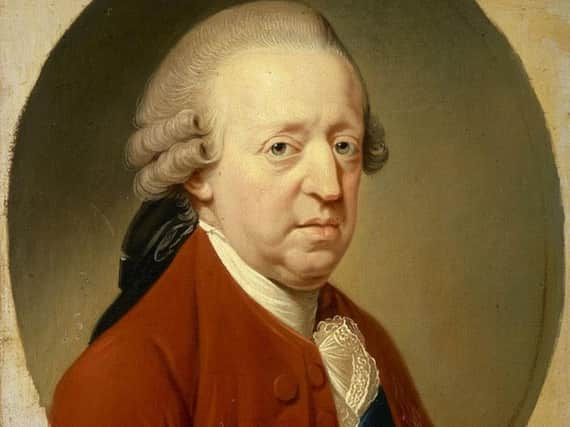On this day 1788 : Hard drinking Bonnie Prince Charlie dies in Rome


The day was January 31, 1788 with the life of Prince Charles Edward Stuart ending at his palazzo in Rome, the city of his birth.
His death came 42 years after he led Jacobite forces onto the field at Culloden in his final bid to return his family line to the throne.
Advertisement
Hide AdAdvertisement
Hide AdThe image of the man who led rebel Scots against the British Army romanticised ever since but in reality his defeat helped twist the psyche of the grandson of James II and VII.
By the time of his death, the Prince had a reputation for hard drinking and domestic abuse with his wife Princess Louise of Stolberg-Gedern leaving him in 1780 amid claims he assaulted her.
"Charles was undoubtedly moody and sometimes vicious and depressed as it became clearer and clearer that the highpoint of his career had been over when he was 25," earlier wrote Professor Murray Pittock, a British cultural historian at Glasgow University.
Although popularly portrayed as a well-dressed pretty boy, the bravery and strength of the Prince has also been remembered.
He first saw military action when he was 13 and during the '45 he led his army from the front.
At Culloden, as any hope of victory drifted from the Jacobites, it was noted that the Prince wanted to charge forth in a bid to break the enemy.
It was ordered that Charles was removed from the field for his safety with the Prince apparently crying “They won’t take me alive!”.
After being taken from the field, he attempted to return to the fray before being removed removed once again by a Scottish officer who seized his horse's bridle and moved him away from the battle.
Advertisement
Hide AdAdvertisement
Hide AdMonths earlier, it was the Prince who wanted to proceed to London after reaching Derby with the Jacobites but his Council of War voted instead to retreat and head back to the Highlands.
After the defeat at Culloden, the Prince spent five months on the run through some of the toughest of Highland terrains where he lived in caves with little food or comfort.
He fled in exile, first to France and then to Italy in 1777. First arriving in Florence, he later relocated to Rome.
The Prince's heavy drinking had been noted by his father before he left for Scotland in 1745. Encouraged by his supporters in Scotland, it is said he came to console himself with spirits to see himself through his anxieties and discomforts.
"I have learned in my skulking to take a heart dram," the Prince wrote.
Hiding in South Uist, he would drink straight from the bottle, and initiated a party that lasted for three days and three nights.
After his death, his brother, Henry Benedict, ordered that his body be conveyed to Frascati Cathedral, where he was bishop.
Charles' remained were later moved to the crypt of St. Peter's Basilica in the Vatican where they were laid to rest next to those of his brother and his father near the monument to the Royal Stuarts.
His heart, however, remained in Frascati Cathedral, where it is held in a small urn beneath the floor.
